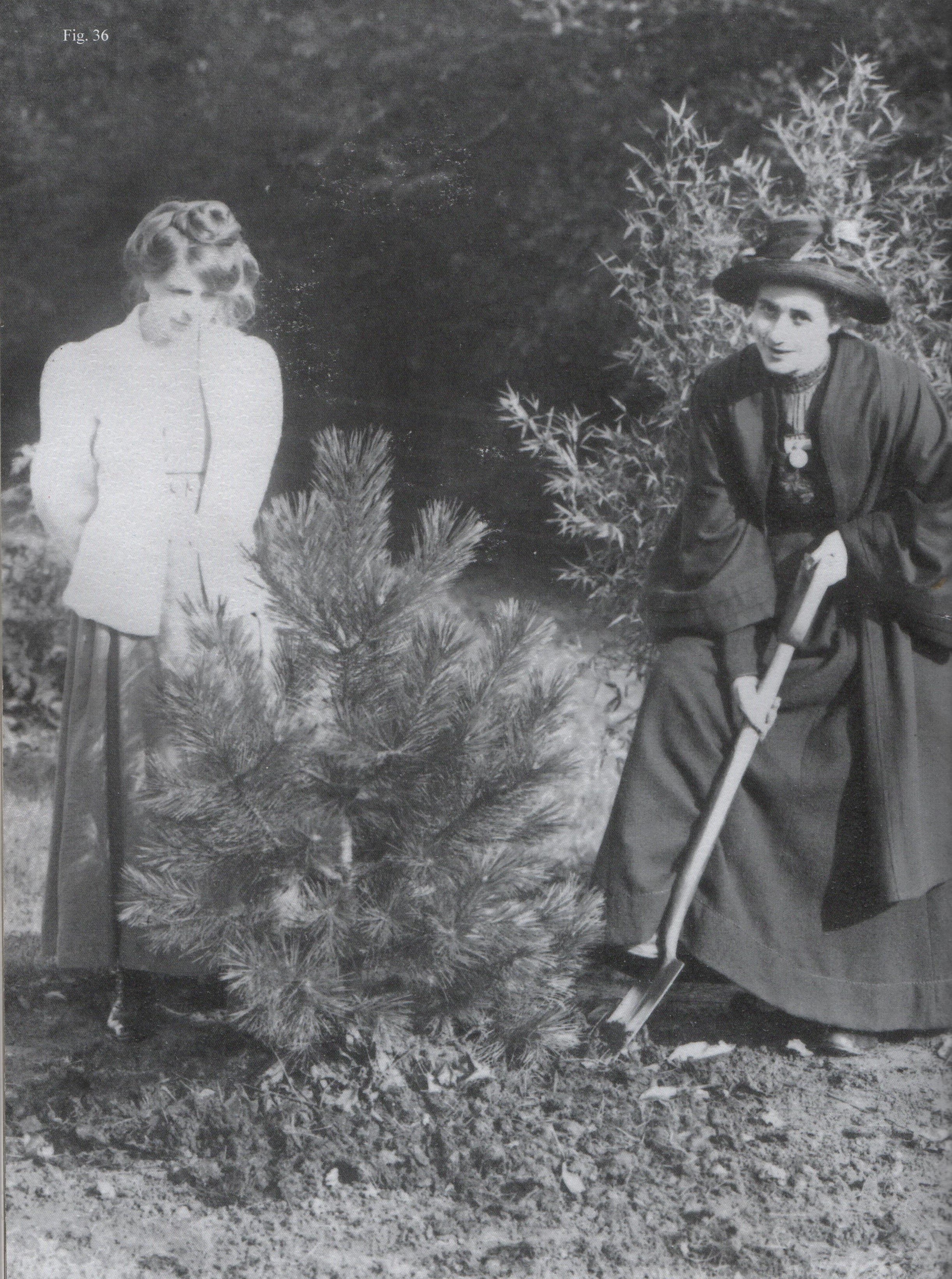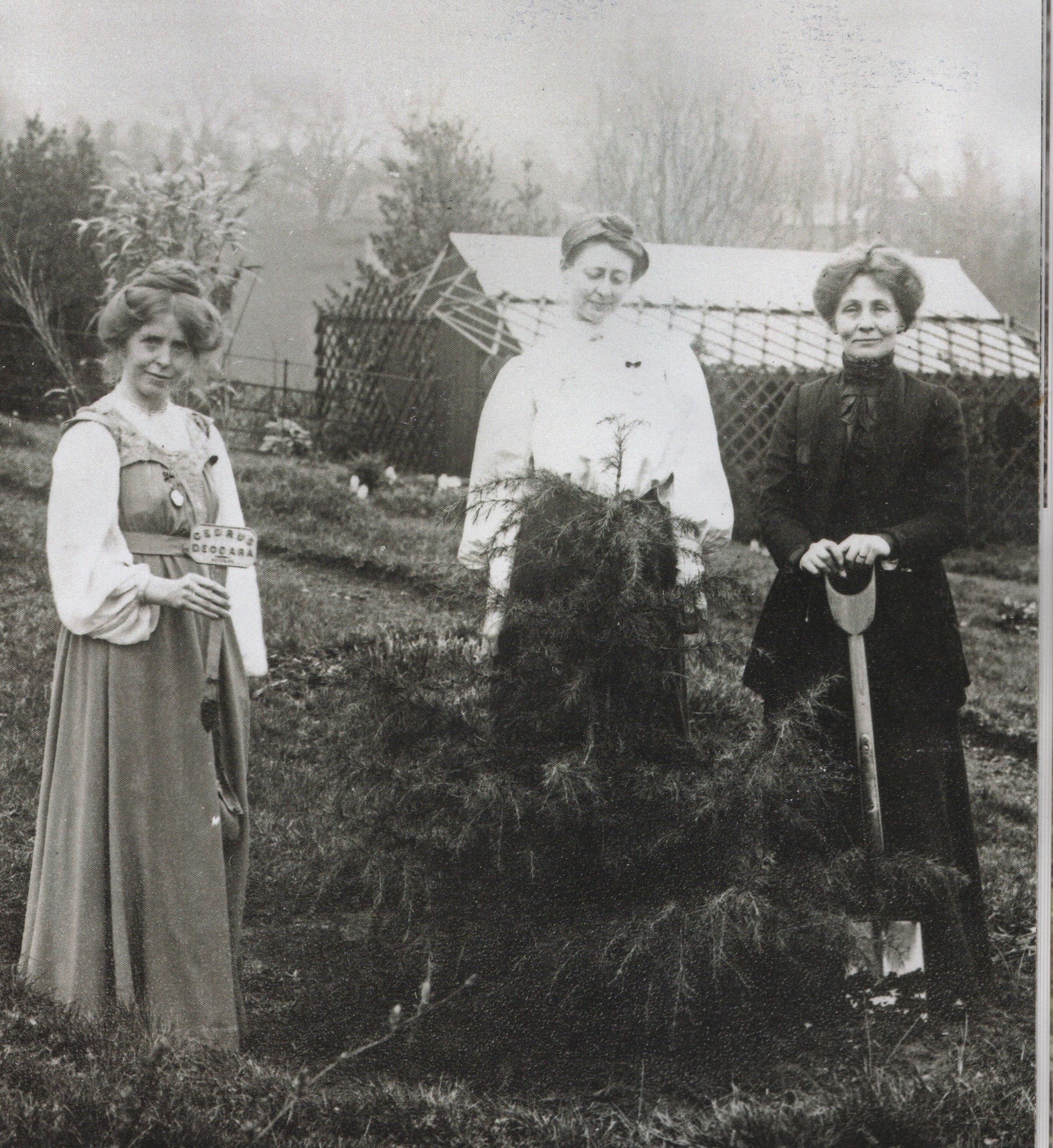Story
Thank you for visiting our JustGiving page.
We are asking for funds to ensure that the last surviving Suffragette tree can continue as a living memorial to those exceptional and courageous women who, over 100 years ago, founded a movement that was to change the political, social and cultural situation of women in this country and across the world. This magnificent Austrian Pine is the sole survivor of Annie's Arboretum, a collection of trees planted in the grounds of Eagle House, near Bath, by suffragettes who stayed in the house, often to recuperate from imprisonment for their political actions. While it has been cared for solely by the house owners in whose modest garden it stands, it is now in desperate need of major and costly remedial work.
When restored, this tree which was planted as a sapling in celebration of the women who fought so hard for universal suffrage, will continue to inspire present and future generations of women and men to work for equality.
The tree was planted in 1909 by Rose Lamartine-Yates who was imprisoned after she and 28 other women marched on the Houses of Parliament. A life-long suffragette, Lamartine-Yates was key in creating an archive of the movement and founding the Suffrage Fellowship Collection , now in the museum of London. She went on to become a London County councillor and the first women elected to the council of the Cycle Touring Club.

Rose Lamartine-Yates (on the right) planting the tree on 30th October 1909.
Annie's Arboretum, or the Suffragette Wood, was created in the grounds of Eagle House from 1909-1912. Around 60 suffragettes planted trees, forty-six of them by women who had been imprisoned for their cause including Annie Kenney (for whom the arboretum was named), Emmeline Pankhurst, Christabel Pankhurst, Millicent Fawcett, Vera ‘Jack’ Holme, Constance Lytton and Winnie Simmons to name a few. Each planting was a special occasion and the women dressed in their finest clothes and wore their honorary WPSU medals to have their photographs taken as a record of the event. Within the four acres site was the Suffragettes' Rest, a place for women to stay, often to recover from the brutalities of imprisonment and forced feeding, find friendship and support, compose and practice speeches, write letters, or simply sit in peace.

Adela Pankhurst and Annie Kenney by Mrs Pankhurst's tree with the Suffragette's Rest in the background.
The gradual redevelopment of the Eagle Estate for housing over the next 50 or so years has led to the demise of the arboretum - eventually all but this one tree has been destroyed. It is now a magnificent 113 year old pine, standing over 30 meters high, and so wide that it needs at least 5 women to encircle its trunk! It has become world renowned and regularly attracts visitors from the UK and abroad (The Legacy of the Pine, The Guardian, 2021).
Although it has a preservation order on it, the financial cost of the tree’s upkeep has been entirely the responsibility of the house holders, Eileen and Keith Paddock, who have been its dedicated caretakers for over 44 years. However, it now needs significant and specialist work to ensure its safety and survival. Over the years, limbs of the tree have broken and fallen off and others are currently fragile and threatening to break. Most worrying is that the crown has become a 'sail' which means that the whole tree is in danger of being badly damaged or even brought down entirely in high winds.

Annie Kenney, Mary Blathwayt and Emmeline Pankhurst.
Your contribution will ensure that this living piece of history will flourish for many years to come, so that future generations can continue to draw inspiration in the ongoing struggle for equality across the world, from those who so courageously fought for women's rights in the late 19th and early 20th centuries. We owe them so much.